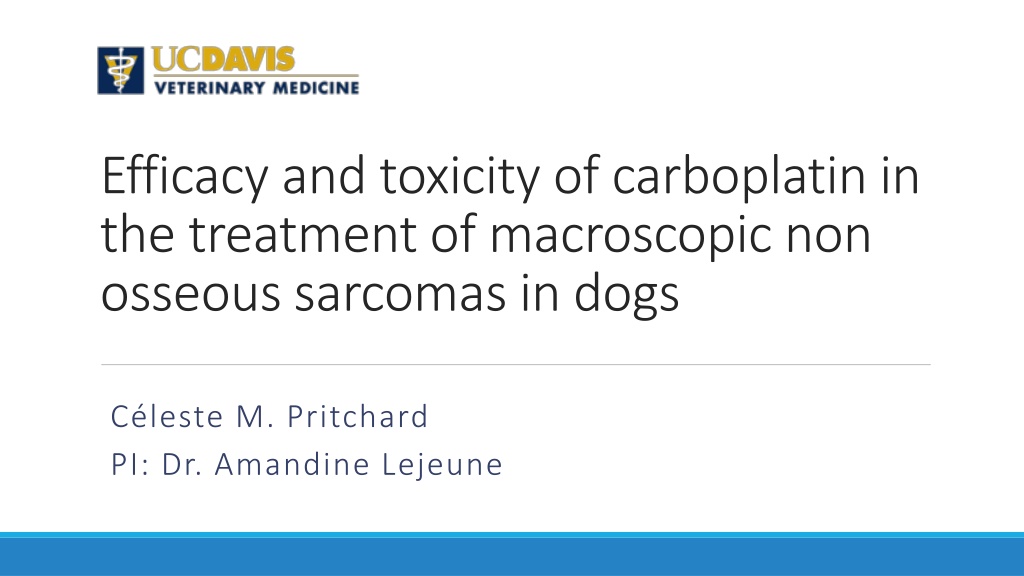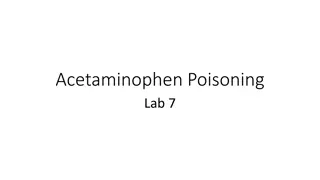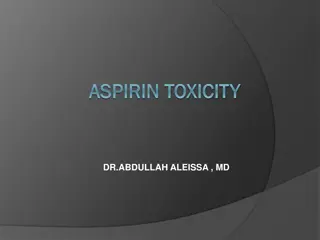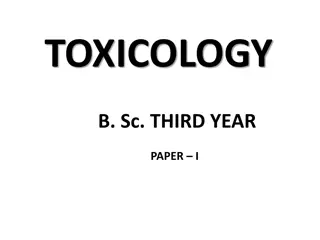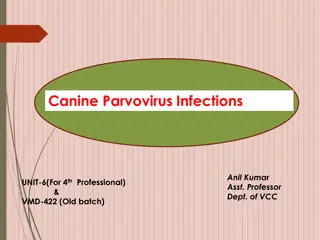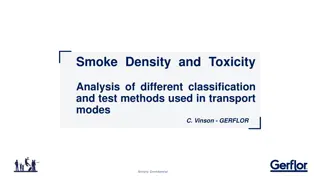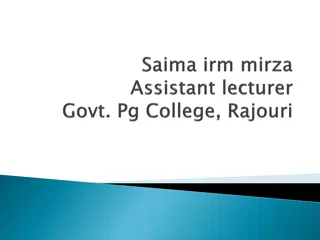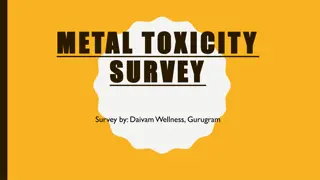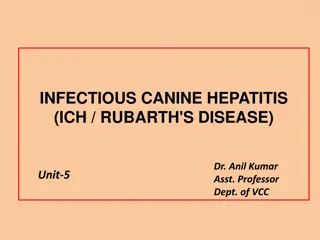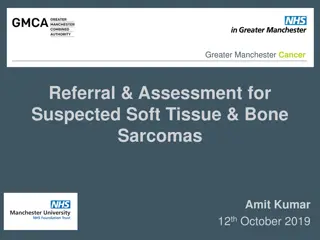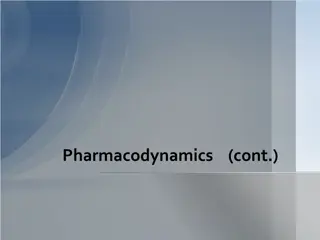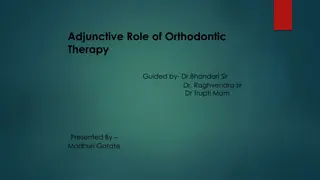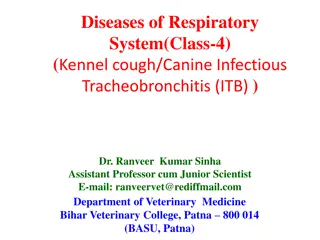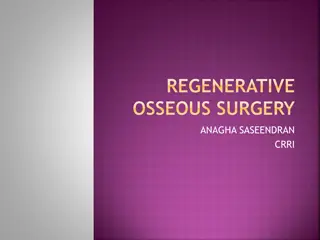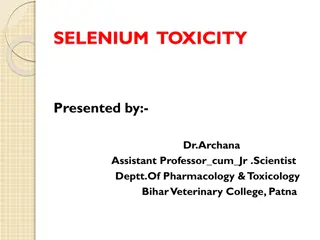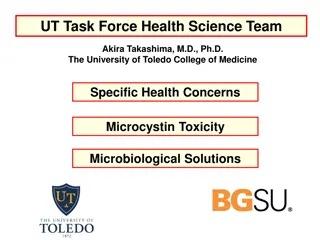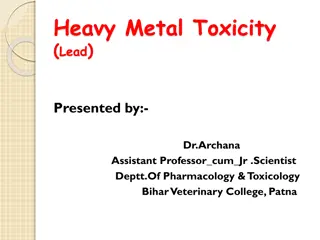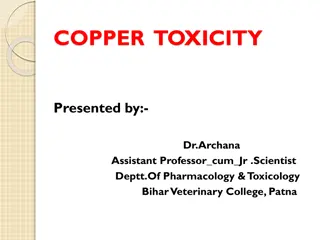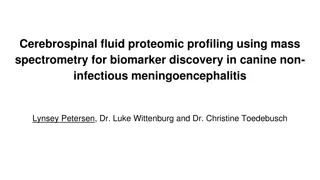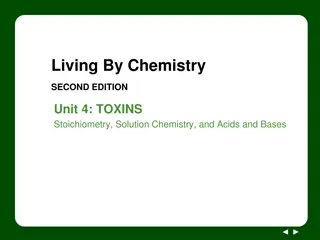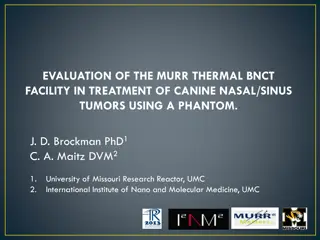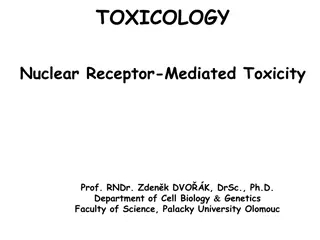Efficacy and Toxicity of Carboplatin in the Treatment of Canine Non-Osseous Sarcomas
The study evaluates the efficacy and toxicity of carboplatin in treating macroscopic non-osseous sarcomas in dogs. The research focuses on soft tissue sarcomas (STS) and mesenchymal tumors, exploring carboplatin's limitations, response rates, and toxicity profiles. Aimed at determining the drug's effectiveness and adverse event profile, the retrospective analysis covers data from 1990 to 2022, emphasizing tumor response and adverse effects post-carboplatin. Through descriptive statistics and patient treatments analysis, the study aims to provide insights into carboplatin's role in managing canine sarcomas.
Download Presentation

Please find below an Image/Link to download the presentation.
The content on the website is provided AS IS for your information and personal use only. It may not be sold, licensed, or shared on other websites without obtaining consent from the author. Download presentation by click this link. If you encounter any issues during the download, it is possible that the publisher has removed the file from their server.
E N D
Presentation Transcript
Efficacy and toxicity of carboplatin in the treatment of macroscopic non osseous sarcomas in dogs C leste M. Pritchard PI: Dr. Amandine Lejeune
Non-osseous Sarcomas Soft Tissue Sarcomas (STS) Mesenchymal Variable classification Locally invasive Low rate of metastasis 20.3% malignant skin tumors Chemotherapy Other treatment options? 2% of all canine tumors Metronomic or dose intense (MTD) Response rates STS 0-36%, HSA 0-48% (86%)
Carboplatin Limitations of Doxorubicin Resistant tumors Severe AEs Cardiotoxicity P-glycoprotein substrate Platinum agent Non-cell-cycle dependent Commonly used for osteosarcoma Similar outcomes as doxorubicin Used at UC Davis for STS and HSA unknown! Favorable toxicity profile Not a P-glycoprotein substrate Adjuvant for HSA Response rates remain Intralesional post surgery of STS
Carboplatin Well tolerated Similar adverse events (AEs) Hypotheses & Aims Variable sensitivity histologic subtype number of prior treatments Aim 1: Determine efficacy of carboplatin in the treatment of macroscopic non osseous sarcoma in dogs Aim 2: Describe the toxicity profile and adverse events (AEs)
Retrospective (1990 2022) Computerized search of VMACS using keywords Materials & Methods Data Collection DVMs or clients contacted VCOG Adverse Events RECIST - Response Included if... Dogs with macroscopic STS or HSA Received carboplatin Adequate follow-up data Distant vs. Local disease Previous treatments Signalment Diagnosis Excluded if... Sarcoma of bone Only microscopic disease Insufficient follow-up data Tumor Response Adverse Effects post carboplatin
Patient & treatment(s) Complete response (CR), Partial response (PR), Stable disease (SD), Progression of disease (PD) Descriptive Statistics Materials & Methods Statistics Adverse events (AEs) Overall Response Rate (ORR) Number dogs achieving best response divided by total number dogs Initial carboplatin to date of PD (or death w/o evidence of PD) Progression- Free Interval (PFI) Effect of stage and pre-treatment
17 STS 12 HSA 29 dogs (16 F, 13 M) 9.7 years (range 2.5-13.8) 24.75 kg (range 5.6-45) ) Results 3 ABCB1-1 mutants Study Population Median # doses 2 (1-12) Median dose (mg/m2) 263.7 (148.2-332.8) 62% failed doxorubicin prior to carboplatin 58% had metastatic disease prior to carboplatin
VCOG Grade Thrombocytopenia Neutropenia PCV Constitutional GI Results Toxicity Grade I 6.9% 5.5% 19.4% 0% 13.8% Grade II 8.3% 2.7% 4.1% 1.3% 2.7% Grade III 4.1% 1.3% 0% 0% 0% Grade IV 2.7% 1.3% 0% 0% 1.3% Grade V 0% 1.3% 0% 0% 0% Grade I and II: 65.5% Grade III and IV: 11.1% Grade V: 1.3%
ORR all tumors 13.8% CR 1/29 PR 3/29 Results Efficacy HSA 33.3% Response Rates STS 0% Median duration of response 103 days (39-252)
Progression Free Interval Median 42 days (Range 6-252)
Local vs. Distant Disease Local median 23 days Distant median 49 days P<0.05
Nave vs. Prior Treatment Na ve median 48.5 days Prior tx median 42 days P>0.05
Acceptable toxicity profile Response rate low and of short duration Discussion & Conclusions Variable efficacy HSA was more sensitive Patients with distant disease may have better response Phase II clinical trial focusing on the use of carboplatin in dogs with HSA may have favorable response up to 42 days Inherent to retrospective nature macroscopic HSA Limitations
Acknowledgements Dr. Lejeune Dr. Pessah and his team This project was supported by NIH 5T35OD010956 Student Advanced Training in Research grant fund Thank you!
References Click to add text Questions?
